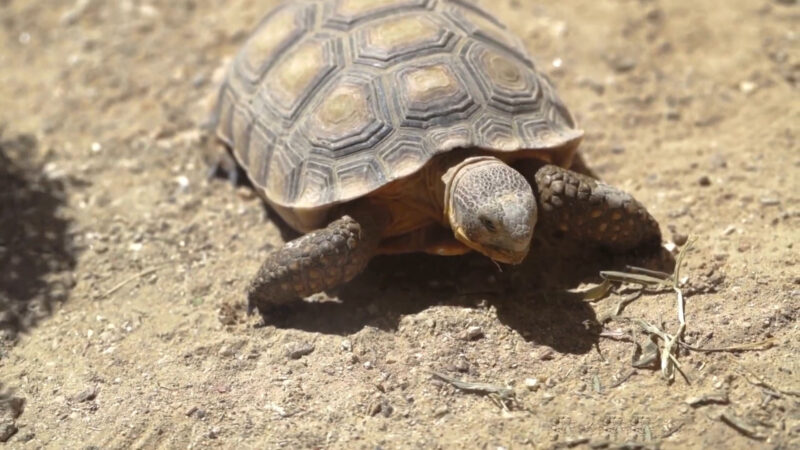In the animal kingdom, speed often takes center stage. We marvel at the lightning-fast cheetah, the swift falcon, and the rapid hare.
However, during a hiking trip in the deserts of Arizona a few years ago, I encountered a creature that challenged this notion of speed being paramount – a Gila Monster. This venomous lizard, adorned with striking black and pink scales, was moving at a pace that could only be described as glacial.
As it ambled across the desert floor, seemingly unconcerned by my presence or the harsh desert sun, I was captivated. This encounter sparked my interest in the slower creatures of the world, leading me to discover a realm of life that thrives not on speed, but on patience, endurance, and a slow, steady pace.
In this article, we’ll shift our gaze from the swift and agile, and instead, explore ten of the slowest animals in North America.
1. The American Woodcock (Scolopax minor)
Meet the American Woodcock, also known as the ‘timberdoodle,’ a bird that has mastered the art of living life in the slow lane. With a top speed of a mere 5 mph, it’s not going to be breaking any speed records anytime soon.
But don’t be fooled, this bird is a survivor. It has evolved to become a master forager, using its long, flexible beak to probe the soil for its favorite meal—earthworms.
Watch as it moves slowly and deliberately, a sight that is truly mesmerizing, especially during the breeding season when males perform a unique ‘sky dance’ to attract females. This involves spiraling into the air, creating a twittering sound with their wings, then zigzagging back down to the ground.
2. Gila Monster (Heloderma suspectum)
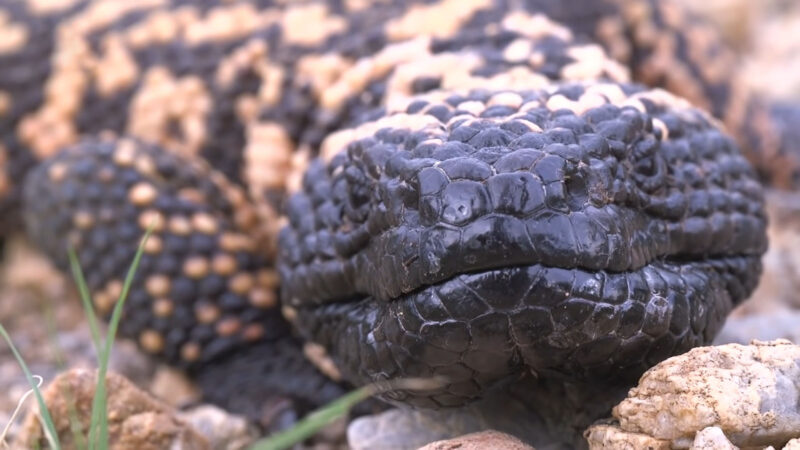
The slow-moving Gila Monster is a native of the southwestern United States and is one of only two venomous lizards in the entire world. It won’t take any races, as its top speed is only 0.15 mph.
But, Gilla Monster makes up for its lack of speed with powerful venom, though. When threatened, this animal has the ability to administer a painful bite.
The venom that is released after a bite has a specific peptide that was produced by glands in the lower jaw. This sluggish but efficient defense technique was employed by the Gila Monsters can fend off and repel the majority of predators, which allows them a reasonably tranquil existence in the hard desert environment.
3. Desert Tortoises (Gopherus agassizii and Gopherus morafkai)
The desert tortoise is a well-known inhabitant of the arid regions in the southwest, and it typically resides in burrows where it seeks shelter from both predators and harsh weather conditions throughout most of its lifetime. These burrows are also important microhabitats for other desert wildlife, demonstrating the tortoise’s crucial role in its ecosystem.
They have adapted to thrive in the harsh desert environment, where resources are scarce and temperatures can be extreme. With a top speed of 0.2 mph, these tortoises are the epitome of the phrase “slow and steady wins the race.”
Their slow pace conserves energy and water, vital for survival in the desert.
4. Garden Snail (Cornu aspersum)
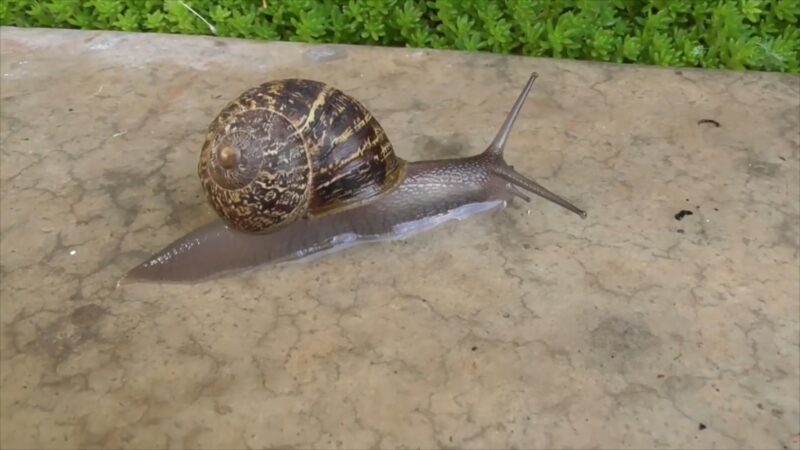
In North America, numerous gardens provide shelter to garden snails, known for their sluggish movement. Their slow pace, making them one of the slowest land animals, allows them to conserve energy and moisture in their frequently dry habitats.
With a maximum speed of 0.03 mph, garden snails exhibit efficiency as herbivores, consuming various types of plant matter.
Their unique eating mechanism involves a radula, resembling a tongue ribbon equipped with countless tiny teeth. This radula aids them in scraping food particles.
5. Sea Anemone (Actiniaria)
Although they are frequently misunderstood as immovable creatures, sea anemones can move, albeit at a pace that would make a snail look like a sprinter. These fascinating underwater animals can move at speeds of just 0.001 miles per hour.
They can swim by stretching their bodies as well, but this is a rare sight. Sea anemones are named after their terrestrial cousins despite seeming more like exotic underwater blooms than actual organisms.
But don’t be fooled by their flower-like facade; these creatures are effective predators in their own right. Despite their languid movements, Sea Anemones are skilled hunters, using their tentacles armed with stinging cells to capture prey.
This slow yet efficient hunting strategy allows them to thrive in the vast expanse of the ocean, proving that in the world of Sea Anemones, slow and steady does indeed win the race.
6. Banana Slug (Ariolimax)
The Banana Slug, a creature that sports a vibrant yellow hue akin to its namesake fruit, is a resident of the moist forests of the Pacific Northwest. With a pace that clocks in at a mere 0.006 mph, it holds a place among the slowest creatures on our planet.
However, don’t be fooled by their sluggish speed. These slugs are vital contributors to the ecosystem, playing a key role in the recycling of organic matter and the dispersal of seeds.
Their slow pace doesn’t hinder their ecological contributions; instead, it complements their unique method of locomotion. Banana Slugs secrete a layer of mucus, creating a slick surface on which they glide.
This movement involves the contraction and expansion of their muscular foot, propelling them forward at their leisurely pace. This mucus serves a dual purpose, acting as a deterrent to potential predators by making the slugs unpalatable.
In the world of the Banana Slug, slow and steady not only wins the race but also ensures survival.
7. The Dwarf Seahorse (Hippocampus zosterae)
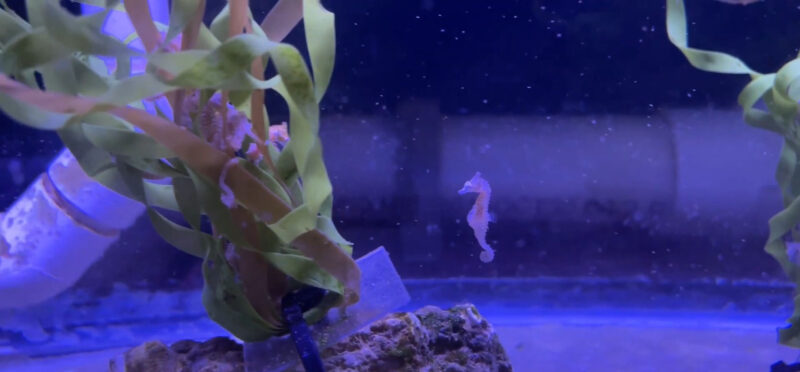
The Dwarf Seahorse, the reigning champion of slow swimmers, moves at a glacial pace of 0.001 mph. These minuscule marvels of the sea have a preference for anchoring themselves to seagrass and corals using their prehensile tails, where they patiently wait for tiny crustaceans to drift into their path.
Dwarf seahorses can move slowly, but they are hardly pushovers when it comes to hunting. They use an original technique to catch prey.
These creatures are ambush predators, using their tube-like snouts to suck in small animals that unwittingly venture too close. Their slow, stealthy movements serve as a form of camouflage, helping them blend into their surroundings and making them a challenge for predators to spot.
In the underwater world of the Dwarf Seahorse, slow and stealthy is the key to survival.
8. Swallowtail Butterfly (Papilio)
Despite being endowed with the ability to fly, swallowtail butterflies frequently opt to fly slowly, traveling only 0.5 mph. This leisurely, graceful flight is a tactic to save energy during their protracted journeys.
The largest and most colorful butterflies to grace the sky of North America are swallowtails. As they flit from bloom to bloom, sipping nectar with their long, straw-like tongues, their leisurely flight is a sight to behold.
They are adept at avoiding predators despite their slow pace. Birds and other possible dangers are put off by their striking colors and eye-spot patterns. The Swallowtail Butterfly lives in a world where moving slowly and elegantly is essential to survival.
9. Rosy Boa (Lichanura trivirgata)
One of only two boa species indigenous to the United States, the Rosy Boa travels at a slow top pace of 1 mph. These snakes are living examples of the adage “slow and steady wins the race” since they prefer to stalk their prey slowly and covertly.
These small, gentle snakes make their home in the deserts of the southwestern United States. They are primarily nocturnal hunters, relying on their slow, calculated movements to stealthily approach their prey under the cover of darkness.
Sharing their non-venomous characteristics with the Texas Rat snake and Banded Water snake, both of which are also native to North America, Rosy Boas are a testament to the diversity of North American wildlife. Despite their slow pace, Rosy Boas are efficient predators, using their strong constricting abilities to overpower and subdue their prey.
In the world of the Rosy Boa, slow speed is no barrier to survival.
10. Manatee (Trichechus)
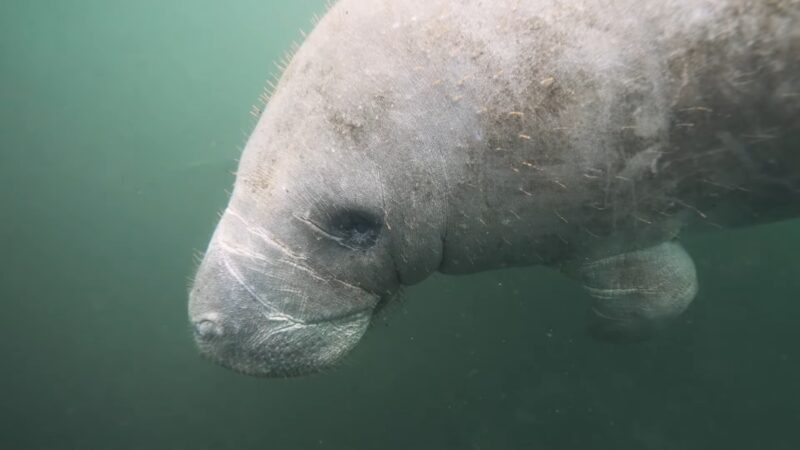
Often referred to as ‘sea cows,’ manatees are marine mammals known for their slow, graceful movements. With a top speed of just 5 mph, they are among the most leisurely creatures in the ocean.
They spend the majority of their time grazing on seagrass in warm, shallow waters, embodying a life of tranquility and peace. Despite their slow speed, manatees are perfectly adapted to their aquatic lifestyle.
Their large, paddle-like flippers enable them to navigate through the water with ease, while their thick, blubber-filled skin helps them maintain their body temperature in the cool water. Manatees are gentle, peaceful animals that play a pivotal role in maintaining healthy aquatic ecosystems.
They control the growth of seagrass and other aquatic plants, contributing to the balance of their marine habitats. In the world of the manatee, slow and steady indeed wins the race.
FAQ
Are there any benefits to these animals’ slow movements?
Yes, slow movements can offer advantages such as reduced energy consumption and enhanced stealth when hunting or evading predators. Additionally, slow animals often have specialized adaptations that make them well-suited to their specific habitats and ecological niches.
Do slow-moving animals have any advantages over faster ones in their ecosystems?
Yes, slow-moving animals play important roles in their ecosystems. They can be efficient decomposers, breaking down organic matter and enriching the soil.
Additionally, they may serve as prey for predators, helping maintain a balanced food chain.
How do slow animals hunt for food if they are not agile chasers?
Slow animals often have specialized feeding habits that suit their slow-paced lifestyle. Some are opportunistic scavengers, feeding on carrion and other food sources readily available to them. Others are ambush predators, relying on patience and stealth to catch prey that comes within their reach.
Do slow animals have any adaptations that help them survive in their environments?
Absolutely! Slow animals often possess unique adaptations that aid their survival. Some may have protective shells, tough skin, or camouflage to blend in with their surroundings.
Others may have specialized sensory organs to detect potential danger or sources of food.
Is the Slow Worm found in North America?
No, the Slow Worm (Anguis fragilis) is not found in North America. It is a legless lizard species native to Europe and parts of Asia.
Final Words
From the American Woodcock’s deliberate flight to the Manatee’s leisurely underwater grazing, the slow pace of these ten North American animals showcases the diversity of life and the unique adaptations that allow them to thrive. Each creature, regardless of its speed, plays a crucial role in its ecosystem, reminding us that in nature, being the fastest isn’t always necessary.
So, let’s celebrate these slow movers. Their unhurried pace offers a unique perspective on the world and serves as a testament to the wonders of the natural world.
Related Posts:
- 20 Slowest Animals in the World - Planet's Most…
- 10 of the Largest Animals In North America - Nature's Giants
- 18 Largest Birds Of North America - How They Survive…
- 11 Largest Whales of North America: Unveiling the…
- Wings of Miniature Majesty: Appreciating 15 North…
- Quail of North America - Their Role in the Ecosystem


